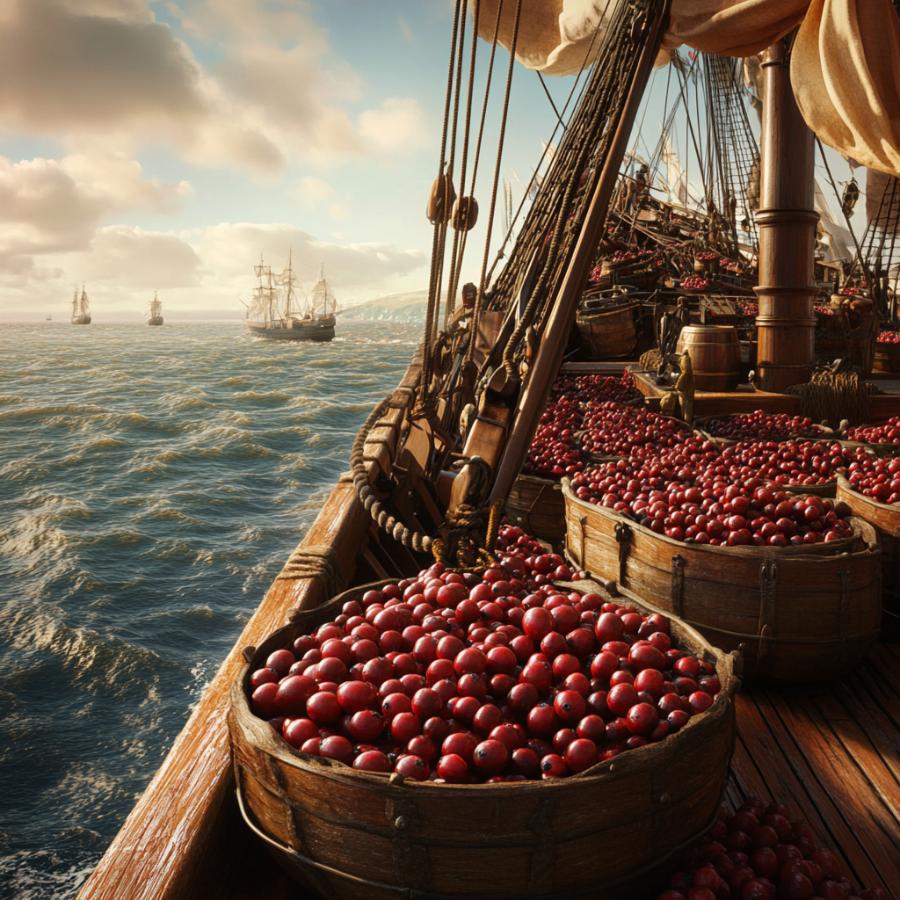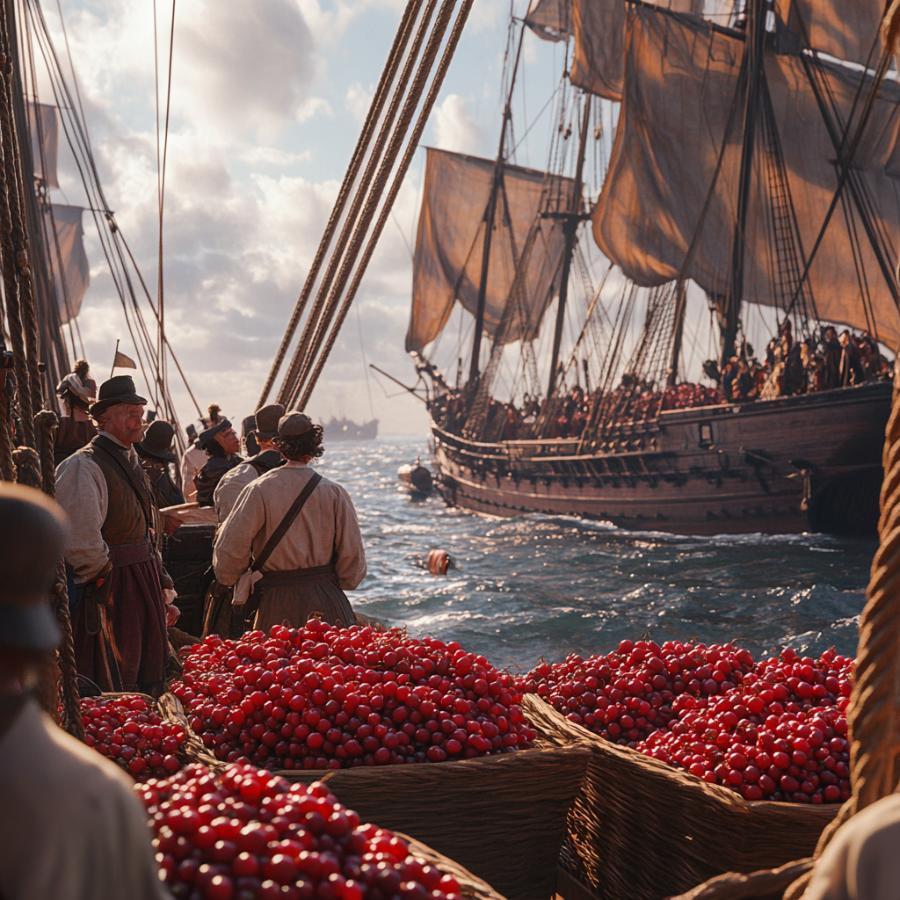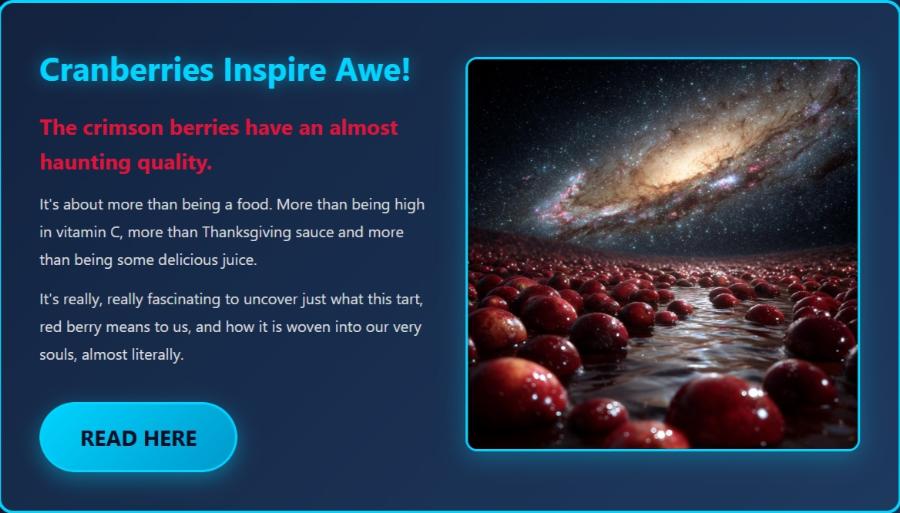
Cranberries to Treat Scurvy
…
For centuries, scurvy was a mystery. Sailors knew the symptoms well—bleeding gums, rotting teeth, swollen limbs—but they didn’t understand the cause. They called it the “sea plague” and assumed it was an unavoidable hazard of life on the ocean. That is, until some clever sailors started noticing that certain foods could stave off the dreaded disease. Yep, you guessed it, the cranberry, a berry that grew wild along the coasts of North America, quietly becoming an unexpected hero of the high seas.
Long before European explorers set sail across the Atlantic, Native Americans were already well-acquainted with the cranberry’s virtues. They used the tart berries in pemmican—a mix of dried meat, fat, and berries that could last through the winter. More importantly, they understood cranberries’ medicinal value, often using them to treat wounds and infections. When Europeans arrived, they quickly learned from their indigenous guides that cranberries were more than just food—they were survival tools.
By the early 1700s, sailors on long voyages began to take note. Ships loaded with barrels of dried cranberries or jars of cranberry preserves became more common, especially among North American trading vessels. While lemons and oranges would later become the poster fruits of scurvy prevention, cranberries had a distinct advantage: they didn’t spoil easily.

Traders with Cranberries & other Goods
PICTURE THIS
Picture this: a cramped ship’s galley with barrels of salted meat, sacks of flour, and, tucked in a corner, a small stash of dried cranberries. These berries, often packed in sugar to preserve them, were more than just a break from the monotony of salted pork—they were a literal lifeline.
One sailor’s journal from the 1730s mentions the introduction of cranberries to the ship’s diet:
“We had taken a store of the little red berries, tart as vinegar, and though their taste is sharp, they bring much relief. My gums, which had been bleeding for days, felt eased within the week.”

Sailor Suffering from Scurvy
VITAMIN C
This sailor wasn’t imagining things. Cranberries are rich in vitamin C, the very nutrient that scurvy-stricken sailors were lacking. Without vitamin C, the body can’t produce collagen, leading to weakened tissues and blood vessels—a slow, painful way to die. A handful of cranberries a day was enough to keep the dreaded disease at bay.
Despite their benefits, cranberries weren’t always easy to come by. European ships relied on the trade networks in the New World to stock up on cranberries, which were dried or turned into jams for easier transport. This made cranberries something of a luxury item on ships bound for Europe or Asia.
However, for sailors traveling the North Atlantic or along the Eastern Seaboard, cranberries were more accessible. Some captains even instructed their crews to forage for cranberries during stops along the New England coast. The sight of bright red berries against the backdrop of a rugged shoreline must have been a welcome splash of color after weeks at sea.

One particularly memorable story comes from a Massachusetts-based whaling crew in the 1760s. After an extended journey with dwindling provisions, they docked near Cape Cod. The sailors, weary and showing the first signs of scurvy, stumbled upon a bog full of cranberries. They gathered the berries by the sackful, eating them raw and using them to make crude jellies. Within days, the crew’s condition began to improve, and the captain reportedly declared cranberries a “sailor’s salvation.”
Such tales spread among seafarers, reinforcing the berry’s reputation as a natural remedy. While cranberries couldn’t replace fresh citrus fruits, they were celebrated for their portability and long shelf life.
By the late 18th century, the British Navy had fully embraced citrus as the primary weapon against scurvy, earning British sailors the nickname “Limeys.” Yet, cranberries still held their own, especially among North American sailors. While lemons and limes required tropical climates to grow and needed careful storage, cranberries thrived in the cooler climates of New England and Canada.

Additionally, cranberries were more versatile. Unlike lemons or limes, which often required squeezing and sweetening, cranberries could be eaten dried, stewed, or as preserves. They became a staple on smaller vessels and in colder regions where citrus was less accessible.
As medical understanding advanced in the 19th century, scurvy became less of a threat. Still, cranberries remained a beloved ingredient in maritime kitchens. Their association with health and vitality ensured they stayed in sailors’ diets, even when fresher options became available.
Today, cranberries are more likely to show up on a Thanksgiving table than on a ship’s provisions list, but their legacy as an early weapon against scurvy endures. The next time you bite into a cranberry scone or sip on cranberry juice, remember the sailors who depended on this awesome berry to keep them alive on treacherous voyages.

Glorious Cranberries
It’s easy to take cranberries for granted in the modern era of vitamin supplements and year-round fresh produce. But for the sailors of the 1700s, cranberries were more than just a tart snack—they were lifesavers. Their story is a testament to human ingenuity, the power of nature, and the importance of learning from those who came before us.
So, whether you’re sailing the high seas or simply navigating the holidays, raise a glass of cranberry juice to the little red berry that once saved lives and helped conquer the mysteries of scurvy.
– Cranby




